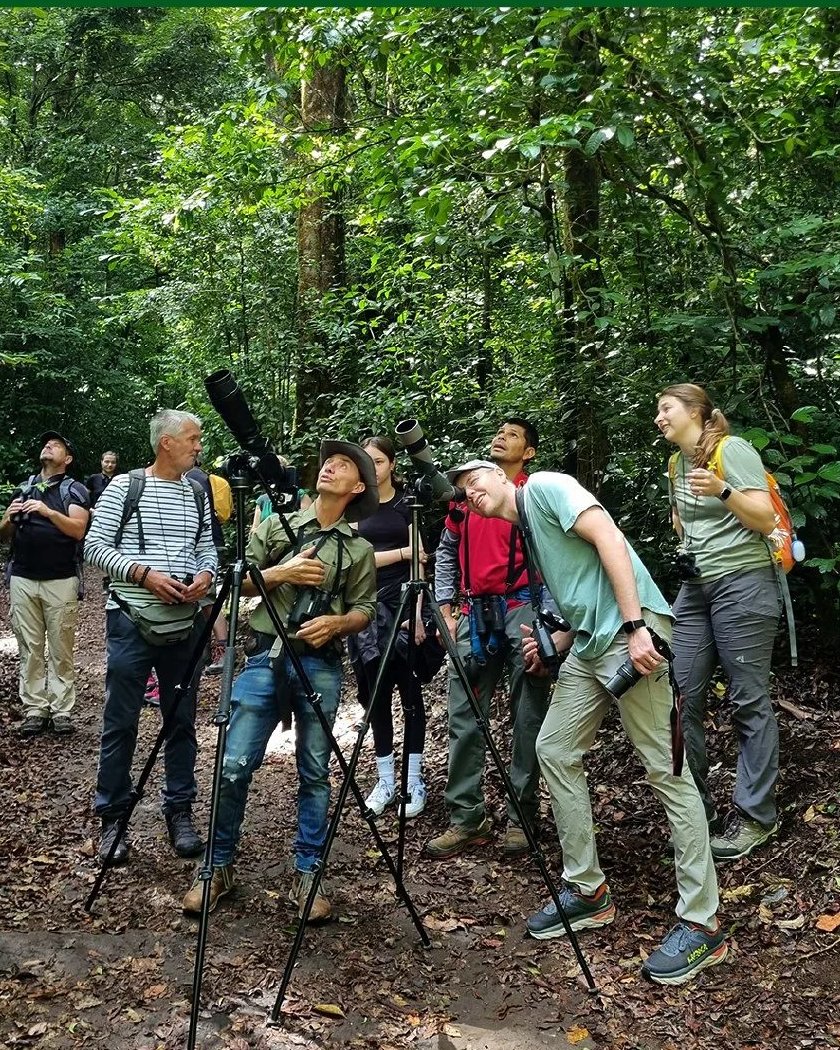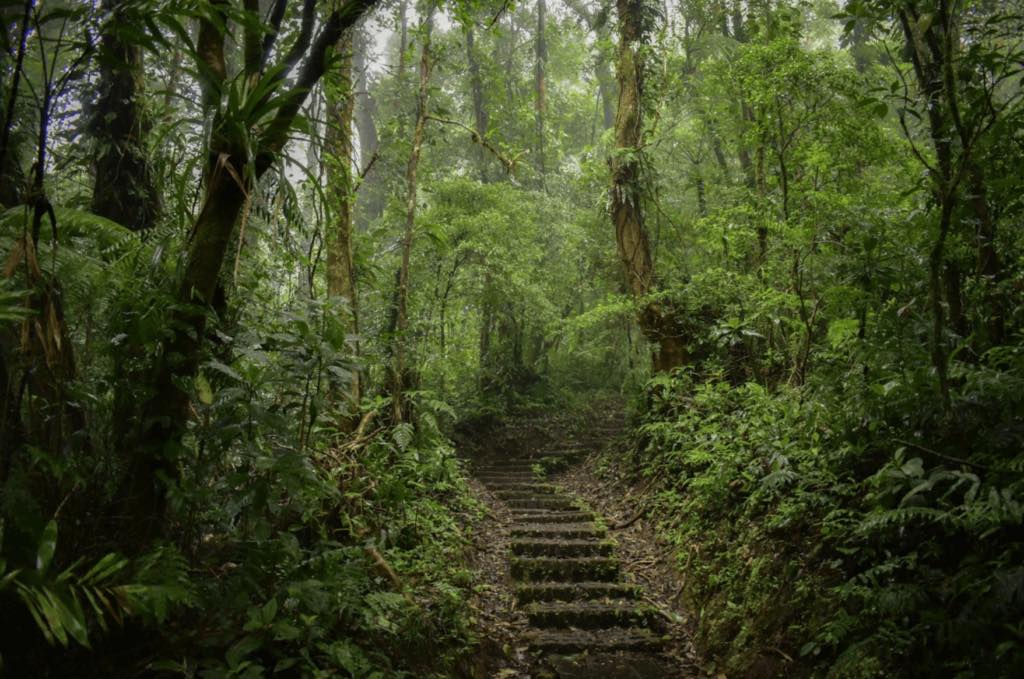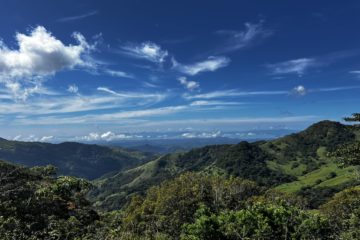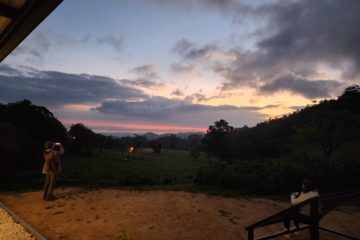“Why Birds and Birders Flock to Monteverde, Costa Rica”
Monteverde stands as an essential stop on nearly every birding tour of Costa Rica, and the reasons are succinctly echoed by real estate experts: habitat, habitat, habitat. This region boasts not only the renowned cloud forest but also secondary forests, transitional dry forests, and transitional rain forests. The remote location and challenging access of Monteverde have played a pivotal role in preserving a significant amount of this diverse habitat.
Over 400 bird species thrive in the welcoming, middle-elevation habitats of Monteverde, featuring two of Costa Rica’s most breathtaking and sought-after species: the resplendent quetzal and the three-wattled bellbird (see box for more information).
Facilitating the exploration of these abundant habitats are the highly qualified naturalist guides from the Monteverde Guide Association, combined with extensive, well-maintained trails within stunning nature preserves. This harmonious blend makes Monteverde an undeniable haven for bird enthusiasts, where even those initially uninterested in avian wonders may depart as passionate converts.

Monteverde is not only a sanctuary for birds but also a home to renowned birders. Figures such as Robert Dean, coauthor and illustrator of “The Birds of Costa Rica: A Field Guide,” and Michael and Patricia Fogden, acclaimed nature photographers behind “Hummingbirds of Costa Rica,” have made Monteverde their base for observing and capturing the region’s rich birdlife.
The Hummingbird Gallery, located near the entrance to the Monteverde Cloud Forest Biological Preserve, curated by the Fogdens, is celebrated for its garden feeders attracting a variety of hummingbirds.
Here is an insider’s guide to Monteverde’s prime birdwatching sites and notable sightings, with insights from experts like Robert Dean and Ricardo Guindon, a seasoned birding guide with over 21 years of experience.

Monteverde Cloud Forest Biological Preserve
Covering 26,000 acres with nine trails spanning 13 km, this reserve is a premier birdwatching destination. Although visitor numbers are restricted to 160 at a time to prevent overcrowding, peak times may experience bottlenecks, particularly during guided nature tours. Dean recommends venturing beyond the initial part of the main trail to escape the crowds and increase your chances of encountering diverse bird species.
If you opt for a specialized bird tour starting at 6 a.m., guided by experts like Guindon, you might witness up to 50 or more species. Resplendent quetzals are prominent in this cloud forest, especially during March and April when they engage in courtship and nesting.
Other sought-after inhabitants include azure-hooded jays, prong-billed barbets, black-faced solitaires, and orange-bellied trogons.
Santa Elena Cloud Forest Reserve (6 km north of Santa Elena)
As the second most popular birding reserve, this site offers 775 acres of cloud forest on the Continental Divide, with four trails covering 12 km. Dean suggests an early start to avoid trail congestion, especially from late April when heavy afternoon rains become more frequent.
Monteverde Ecological Sanctuary
Formerly known as Finca Ecológica, this 75-acre private reserve, situated off the main road between Santa Elena and Monteverde, boasts a secondary forest mixed with a coffee plantation. It provides a different birdwatching experience compared to the cloud forest, allowing birdwatchers to spot species lower down in the tree branches. Open areas are particularly favorable for observing three-wattled bellbirds.
Bajo del Tigre Trail (just before Monteverde Cheese Factory)
Part of the extensive 50,000-acre Children’s Eternal Rain Forest, this 3.5-km trail traverses a relatively dry secondary forest down to a river and a waterfall. Dean notes that while birding can be slow at times, it offers opportunities to spot bellbirds, long-tailed manikins, and Chiriquí quail doves. The area is also known for sightings of orange-billed nightingale thrushes, according to Guindon.
San Gerardo Field Station (1.5-hour hike from the entrance to Santa Elena Reserve)
A remote reserve managed by the Monteverde Conservation League, this site is suitable for serious and fit birders. The reward at the end of a challenging hike is the opportunity to see bare-necked umbrella birds. From late February to early May, males in courting groups display their scarlet throats while serenading potential mates. Dean suggests an early morning visit, emphasizing the need to spend the night before at the rustic station and bring a flashlight for the predawn forest trail.
Selvatura (on the road to Santa Elena Reserve, www.selvatura.com)
Offering various attractions like zip lines, an insect museum, and a butterfly garden, Selvatura caters to diverse interests. Birders will find the hummingbird garden particularly fascinating, with up to 10 species buzzing around. While the opening time might be a bit late for early-morning birding, Dean recommends this location for spotting the elusive highland tinamou along the forest trails.
Freelance Birding
Sometimes, the best birding experiences come at no cost. Dean and Guindon highlight the road leading to La Colina Lodge, just past the Monteverde Cheese Factory, as the best roadside birding spot in Monteverde. Birders can encounter parrots, toucans, bellbirds, motmots, and, during fruiting seasons, golden-browed chlorophonias—endemic to Costa Rica and Panama.
The massive fig tree between the entrance to Hotel El Bosque and the Santa Elena and Monteverde Artisans’ Cooperative (CASEM) stands out as an active birding location. This spot, frequented by Dean even before he discovered his passion for birding, offers sightings of bellbirds, chlorophonias, and a variety of birds feasting on figs.
Across the road, Stella’s Bakery and Art Gallery, open at 6 a.m., provides an excellent early-morning birding spot. Here, visitors can enjoy breakfast and bird-watch from picnic tables, with frequent appearances by emerald toucanets and occasional black guans.
Who’s That Honking?
The unmistakable bird cry of the three-wattled bellbird, resonating as a resounding “BONK,” defines the auditory landscape of Monteverde. Despite their loud calls, these 12-inch, brown-and-white members of the cotinga family, adorned with distinctive long, black wattles, face the risk of disappearing. The Costa Rican Conservation Foundation aims to counter this threat by studying migration patterns and population status, planting new aguacatillo trees, and raising awareness about the decreasing habitat.
Bellbirds migrate to Monteverde from Panama to breed, peaking from March to August, with May and June as the prime months for spotting them. They perch high in the canopy, challenging birders to spot them despite their resonant calls.
Guiding Lights
The Monteverde Guide Association has earned acclaim for its cadre of excellent naturalist guides. Ricardo Guindon, a Monteverde native, emphasizes that all 25 certified guides within the association possess a high school education, a license from the Costa Rican Tourism Institute (ICT), and established residency in Monteverde. These guides hold exclusive rights as local guides

